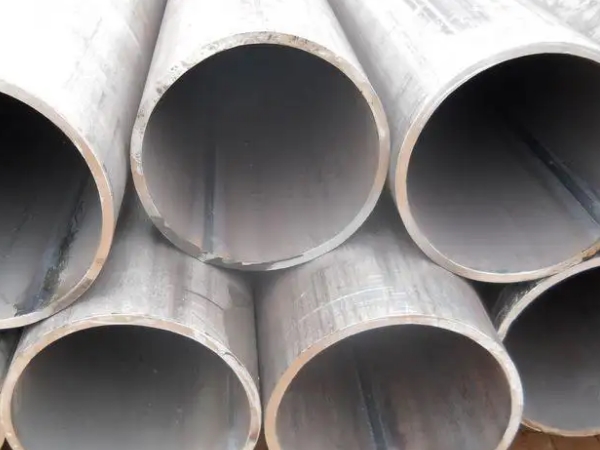Quality Inspection Process of Straight Seam Welded Pipe
Date:2022-05-06View:1750Tags:Straight Seam Welded Pipe, Quality Inspection
The straight seam welded pipe(erw steel pipe) refers to the pipe obtained by straight seam welding of the steel pipe made of hot-rolled or cold-rolled steel plate or steel strip coil welding on the welding equipment. Longitudinal welded pipe manufacturers follow strict production processes in production, but it is difficult to say that 100% of the products produced are qualified and excellent, so it is necessary to conduct quality inspection of longitudinally welded pipe manufacturers. What are the quality inspection processes of straight seam welded pipes?
1. The straight seam welded pipe is oiled and marked. After the inspection is passed, the straight seam welded pipe manufacturer also needs to coat a layer of oil on its surface, which can play a role in anti-corrosion. to mark.
2. Straight seam welded pipe leveling and milling: It is necessary to use an anvil machine to make the original curled steel plate flat, and then use an edge milling machine to perform double-sided milling on the two edges of the steel plate, so that it can reach the required plate width, Edge parallelism and bevel shape.
3. Visual inspection of straight seam welded pipes requires professional technicians to inspect them to ensure quality problems.
4. Ultrasonic flaw detection of straight seam welded pipe, which is a comprehensive inspection that needs to check the internal and external welds of the straight seam welded pipe manufacturer and the base metal on both sides of the weld.
5. X-ray inspection of straight seam welded pipes, and X-ray industrial television inspection of the internal and external welds of the straight seam welded pipe manufacturers.

Quality inspection method of straight seam welded pipe:
There are many methods for quality inspection of straight seam welded pipes, among which physical method is also the most commonly used inspection method. Physical inspection is a method of measuring or inspecting by using some physical phenomena. The inspection of the internal defects of the material or the straight seam welded pipe generally adopts the method of non-destructive testing. The current non-destructive testing includes magnetic testing, ultrasonic testing, radiographic testing, penetration testing and so on.
1. Magnetic test
Magnetic flaw detection can only find defects on the surface and near-surface of magnetic longitudinally welded pipes, and can only do quantitative analysis of defects, and the nature and depth of defects can only be estimated based on experience. Magnetic inspection is to use the magnetic flux leakage produced by the magnetic field to magnetize the ferromagnetic straight seam welded pipe to find defects. According to the different methods of measuring magnetic flux leakage, it can be divided into magnetic powder method, magnetic induction method and magnetic recording method, among which the magnetic powder method is the most widely used.
2. Penetration test
Penetrant inspection uses physical properties such as the permeability of certain liquids to find and display defects, including coloring inspection and fluorescent inspection, which can be used to inspect defects on the surface of ferromagnetic and non-ferromagnetic materials.
3. Radiographic inspection
Radiographic flaw detection is a flaw detection method that uses the properties of ray penetrating substances and attenuation in substances to find defects. According to the different rays used in flaw detection, it can be divided into three types: X-ray flaw detection, gamma ray flaw detection, and high-energy ray flaw detection. Due to the different methods of displaying defects, each radiographic inspection is divided into ionization method, fluorescent screen observation method, photographic method and industrial television method. The radiographic inspection is mainly used to inspect the cracks, incomplete penetration, pores, slag inclusions and other defects inside the weld of the straight seam welded pipe.
4. Ultrasonic flaw detection
In the propagation of ultrasonic waves in metals and other homogeneous media, due to the reflection at the interface of different media, it can be used for the inspection of internal defects. Ultrasonics can inspect any weldment material, any defect in any part, and can find the defect location more sensitively, but it is difficult to determine the nature, shape and size of the defect. Therefore, ultrasonic flaw detection of straight seam welded pipes is often used in conjunction with radiographic inspection.

